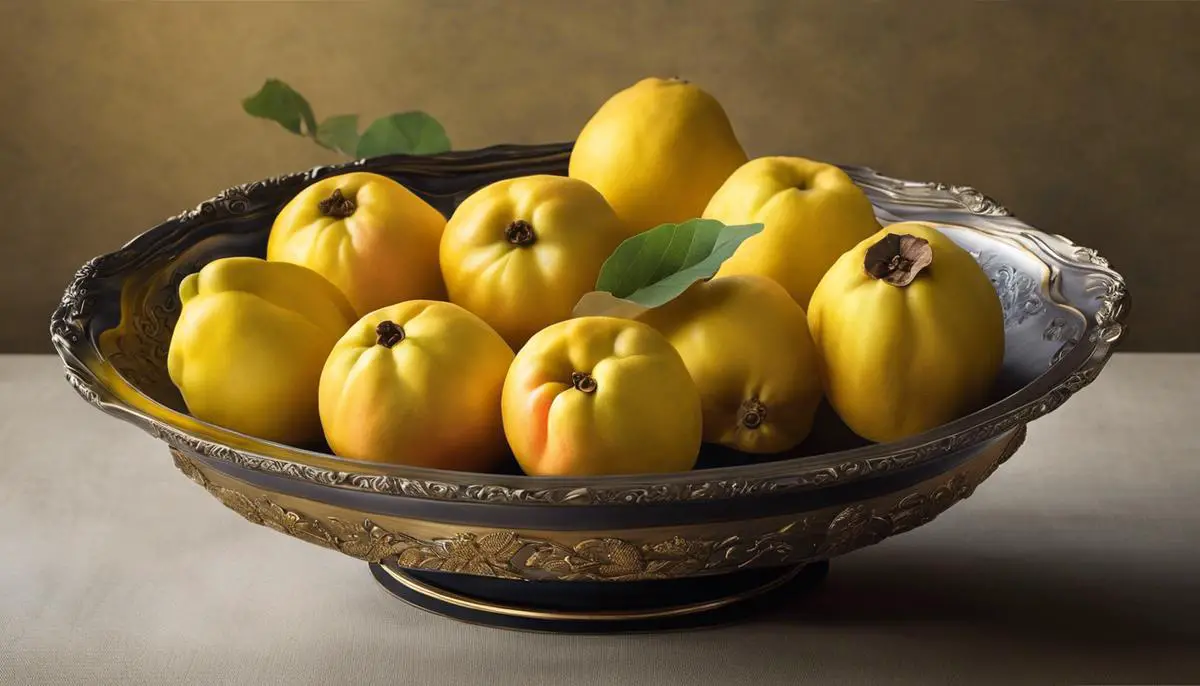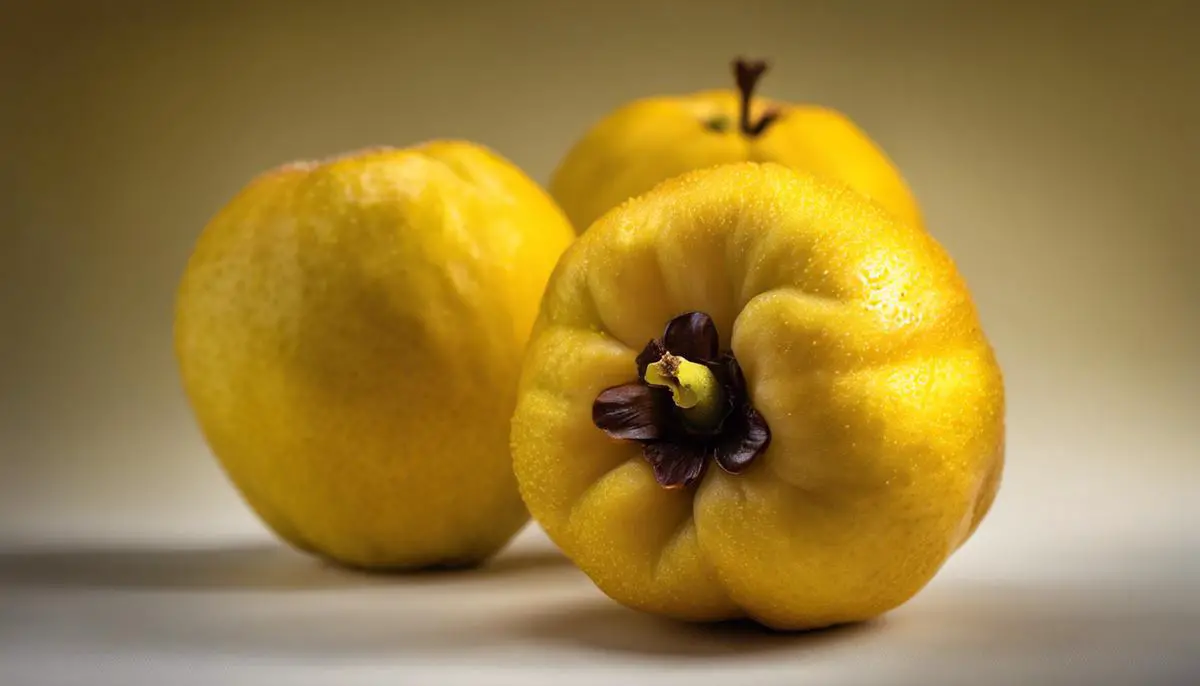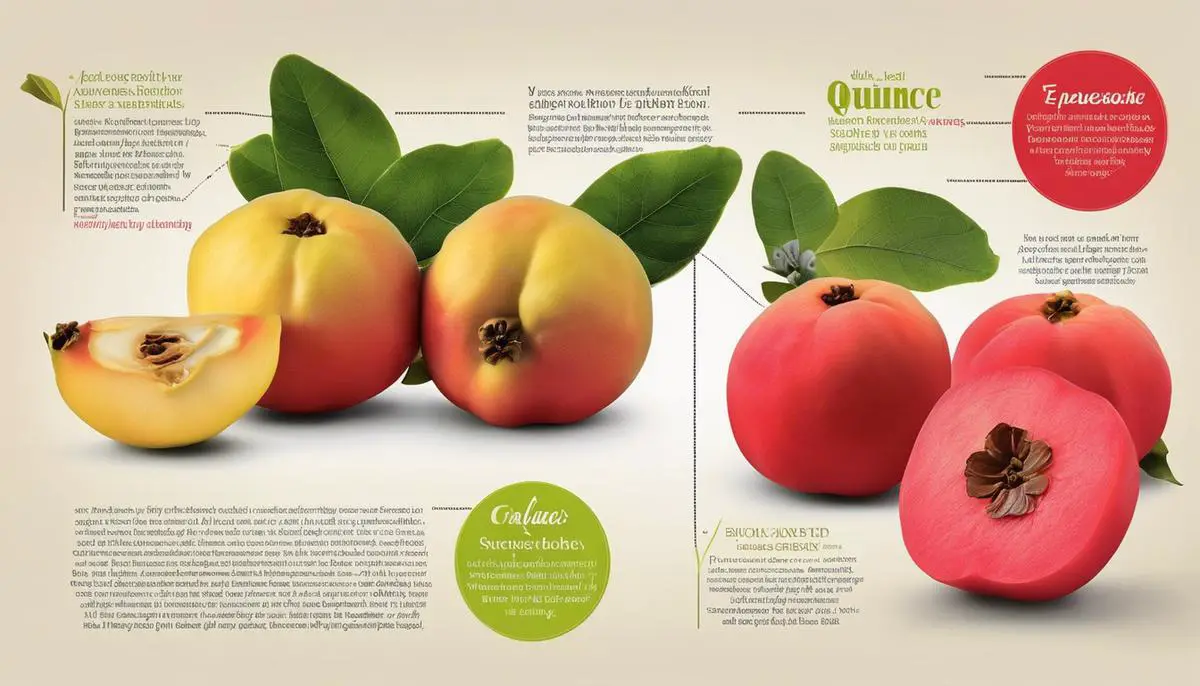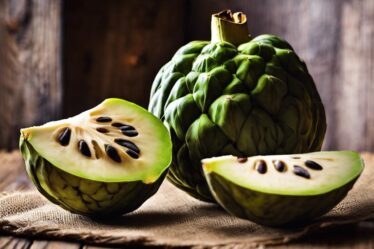
As the world of gastronomy keeps expanding, there are still hidden treasures waiting to be unearthed. Among such culinary jewels is the Quince fruit, often overlooked despite its rich history and exceptional culinary and health benefits. A coveted secret among food enthusiasts, Quince’s fascinating journey starts from its ancient origins and has been beautifully preserved through generations, adding its unique flavor to various dishes. Its widespread culinary usage has seen everything from the sweetening of savory dishes to its excellent leading role in classic desserts. Beyond its tantalizing taste, Quince is a wellspring of nutritional value, contributing to health and wellbeing in multiple ways.
History of Quince fruits
Bursting with vibrant hues of yellow and boasting a perfume-like aroma, the quince fruit is more than just a visual feast – it’s a culinary treasure trove with a rich historical background.
Often touted as the “forgotten fruit,” quince’s origins can be traced back to ancient times. Its unique flavours and textures have been savored around the globe for centuries, and a look back at its intriguing past reveals its fascinating journey.
Believed to have originated in the fertile crescent of Persia, now Iran, the culinary romance with quince started as early as 4,000 B.C. This bright, bumpy fruit was widely planted and appreciated by the Greeks and Romans. As a symbol of love, fertility, and abundance, it often found its way into wedding feasts and was even used as a gift to Aphrodite, the Goddess of Love. Quince was also considered treasured and noble; it was cultivated in medieval monasteries and was a favorite in royal orchards. It was only in the 17th century that quince sailed its way across the Atlantic, gracing the soils of North America, where it gradually faded into the realm of obscurity. But the recent years have seen a resurgence of interest in this old-world gem, and it’s regaining its rightful place in the coziest and most adventurous of kitchens. Today, quince is zealously embraced by food explorers for its distinctive flavor and historic prestige.

Culinary Uses of Quince
As a fruit beloved by culinary enthusiasts, quince holds a stunning versatility. Beneath its hard, yellow exterior lie opportunities for cooks to explore a spectrum of flavors. The unique texture and flavor of the fruit, which transform remarkably upon cooking, lend themselves spectacularly to a variety of dishes. This unassuming fruit can be churned into a unique, zesty sorbet or simmered into a vibrant, aromatic jelly, one that marries well with selections of cheese and cold cuts on a charcuterie board.
Courageous cooks might venture beyond conventional cooking methods and experiment infusing spirits with quince. The fruit’s natural sweetness and unique floral notes make for a scrumptious homemade quince vodka or brandy. Imagine serving a hand-crafted quince cocktail garnished with a slice of raw fruit at your next dinner party – the ultimate gourmet touch that will wow any company.
Taking a rustic approach, quince can also be slow-cooked in stews or braised with meats. Its high pectin content thickens the dish, imbuing every bite with a distinct tartness balanced by the fruit’s lingering sweetness. Meanwhile, pairing quince with spices like cinnamon and star anise enhances its inherent flavors and can fit seamlessly into numerous recipes, delivering a warmth that’s perfect for cozy, home-cooked meals on cold winter nights.
The possibilities for using quince are as endless as a devoted cook’s creativity. This fruit’s potential reaches far beyond simple jellies or traditional pastes. Embracing the humble quince can add an adventurous twist to culinary endeavors, and sharing its little-known delights is a gratifying endeavor that harkens back to simpler times. The rediscovered appreciation for quince is not just a testament to its versatile use in the kitchen, but also a rekindling of our connection to food and its profound ability to unite us.

Health Benefits of Quince
Moving into the health sphere realm of this marvel fruit, quince may not only captivate one’s palate but also offer a platter of incredible health benefits. Boasting a high vitamin C content, quince can be an arsenal against the common cold and help spike up the body’s resistance towards various diseases. It’s also an excellent source of dietary fiber, assisting digestion, and mightily contributing to the satisfactory “full” feeling, which can be a boon for those keeping an eye on their waistlines.
Beyond just the vitamin and fiber content, the humble quince doesn’t shirk in offering an array of essential minerals such as copper and potassium. Potassium regulates blood pressure and heart rate, functionally warding off the risk of strokes and heart disorders. Copper, an often overlooked yet critical nutrient, plays an instrumental role in red blood cell formation. To top it all off, this golden fruit is loaded with antioxidants, defending our body against potential free radical damage, reducing inflammation, and paving the path towards overall wellness.
Astonishingly, quince also offers a touch of love for our skin. Its astringent properties can enhance the appearance and health of your skin, making it a secret addition to many skincare routines. Intriguing, isn’t it? How one fruit could provide such a multitude of benefits. That’s the charm of quince, it keeps everyone guessing and unveiling more reasons to fall in love with it over time. This foundation of health benefits narrates just another reason for the perpetually growing interest in introducing the golden quince into today’s modern and health-conscious kitchens.

Reviving Quince in Modern Cuisine
As the culinary world continues to break boundaries by delving into once overlooked produce, quince is making a grand re-appearance, flaunting its vibrant hues and flavors, and extending a challenge to tastebuds everywhere. Many innovative chefs are not just giving this ancient fruit a fresh spin in novel recipes, but also playing up its visual appeal. The green-to-golden transformation of quince post-cooking adds more than a dash of elegance to the plate presentation. Consequently, many contemporary cafes and fine dining restaurants have started featuring quince in their menus, whether as a robustly flavored reduction over a slow-cooked beef or as a chic topping on a decadent mille-feuille.
As much as refined palates are rejoicing about the quince comeback, it’s also worth noting that this age-old fruit is stirring up a storm among mixologists. Its sweet, slightly tart profile imparts a nuanced flavor to cocktails, creating concoctions that are both refreshing and tastefully complex. When used in infusions, quince coyly reveals its perfumed undertones, creating a libation that is as sophisticated as it is quenching. Meanwhile, in the booming scene of home brewing, craft cider-makers are experimenting with quince for a unique spin on traditional recipes, resulting in ciders tinged with the unmistakable, aromatic notes of the fruit.
Lastly, health-conscious foodies are absolutely delighted with this reintroduction of quince into modern cuisine. The fruit’s high pectin content, known for its cholesterol lowering benefits and provision of relief from gastric issues, makes it a perfect fit for the recent wave of health-centric eating. In a culture that’s increasingly conscious of not just the flavor, but also the nutritional value of what’s plated, the versatile quince—with its health benefits and versatile flavor—has found its moment in the sun. With the continued exploration and implementation of quince in culinary ventures, it’s clear that the elevation of quince from the backseat to the center of the kitchen table is far more than fleeting. It’s a heralding of sorts, whispering of countless more fruitful kitchen renditions yet to come.

The underrated Quince fruit, rich in history, culinary versatility, and health benefits, is making a promising revival in modern cuisine. Innovative chefs and avid food lovers are breathing new life into this often-overlooked fruit. Whether used to enhance an intricate main dish or to star in a decadent dessert, Quince has proven that it’s much more than a culinary relic. Its reemergence is a testament to the age-old food adage: everything old can be new again. As we continue to innovate and explore, we breathe fresh life into time-ravished traditions, showing once again that in the world of food, antiquity can indeed be the forebearer of novelty.



